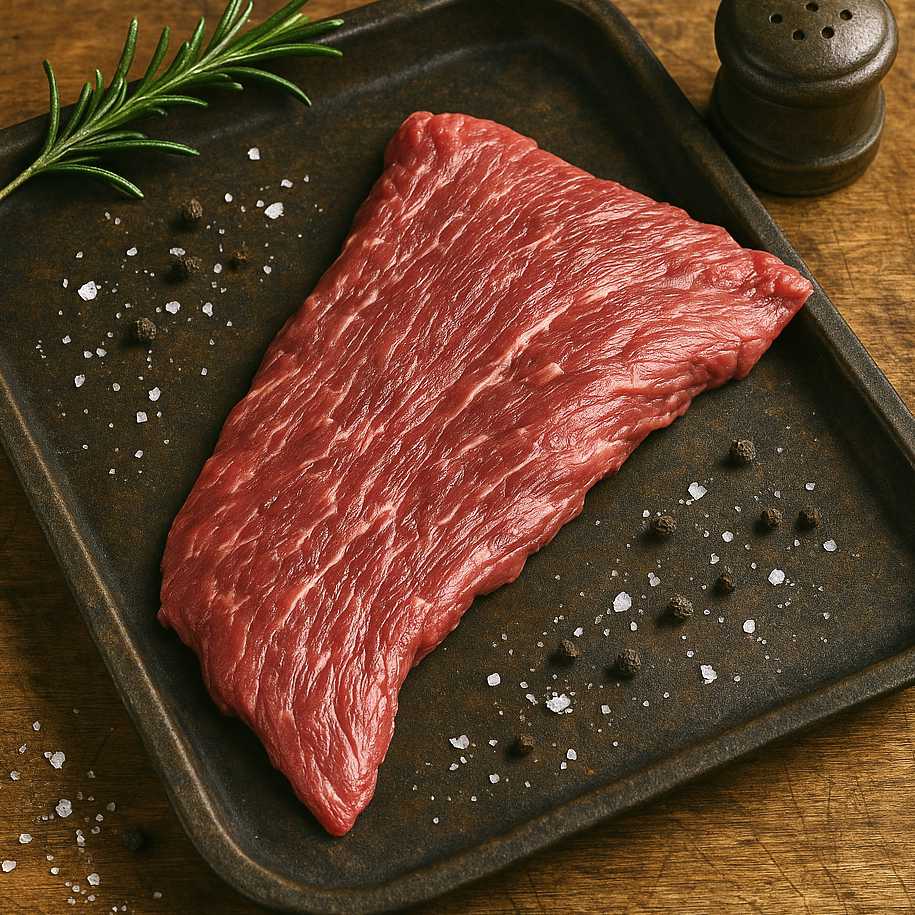(rough puff can also be used):
*The vegetable to use is the yellow-fleshed swede, not a white turnip. This is known commonly in Cornwall as the turnip. It’s also known as the yellow turnip/Swedish turnip in some places and in North America it is called rutabaga.

Skirt comes from low down on the animal in the lower belly close to the onglet (hanger steak). As with many of the less popular cuts it has surprising depth of flavour at the expense of being quite tough if not treated properly. Like onglet and bavette it should be cooked either very quickly at a high heat or very slowly at a low heat.
£18.25
Beef skirt is the cut traditionally used for Cornish pasties. This is the underside of the belly of the animal. It has no gristle and little fat, cooks in the same amount of time as the raw vegetables and its juice produces wonderful gravy.
Use a firm waxy potato such as Maris Peer or Wilja. A floury potato will disintegrate on cooking.
Cornish pasties freeze well. It’s best to freeze them after glazing but before baking. They can be baked from frozen, just reduce the oven temperature a little and add an extra few minutes to the baking time.
Be sure to check that your pasties are piping hot all the way through before eating, whether you’re baking them from scratch, from frozen or reheating them.
We’re proud to support FareShare Yorkshire.